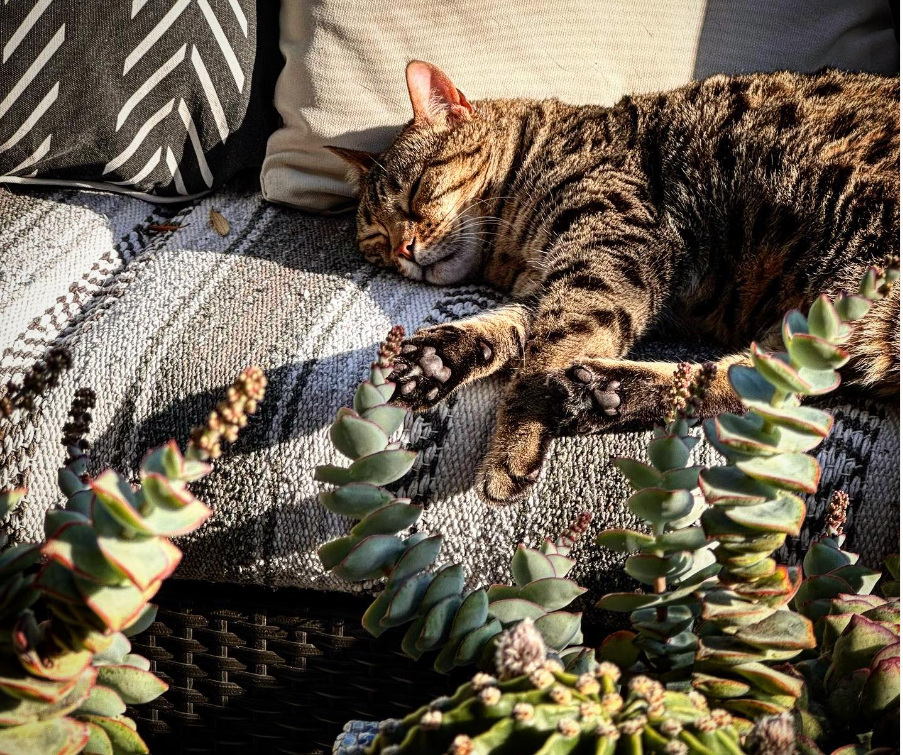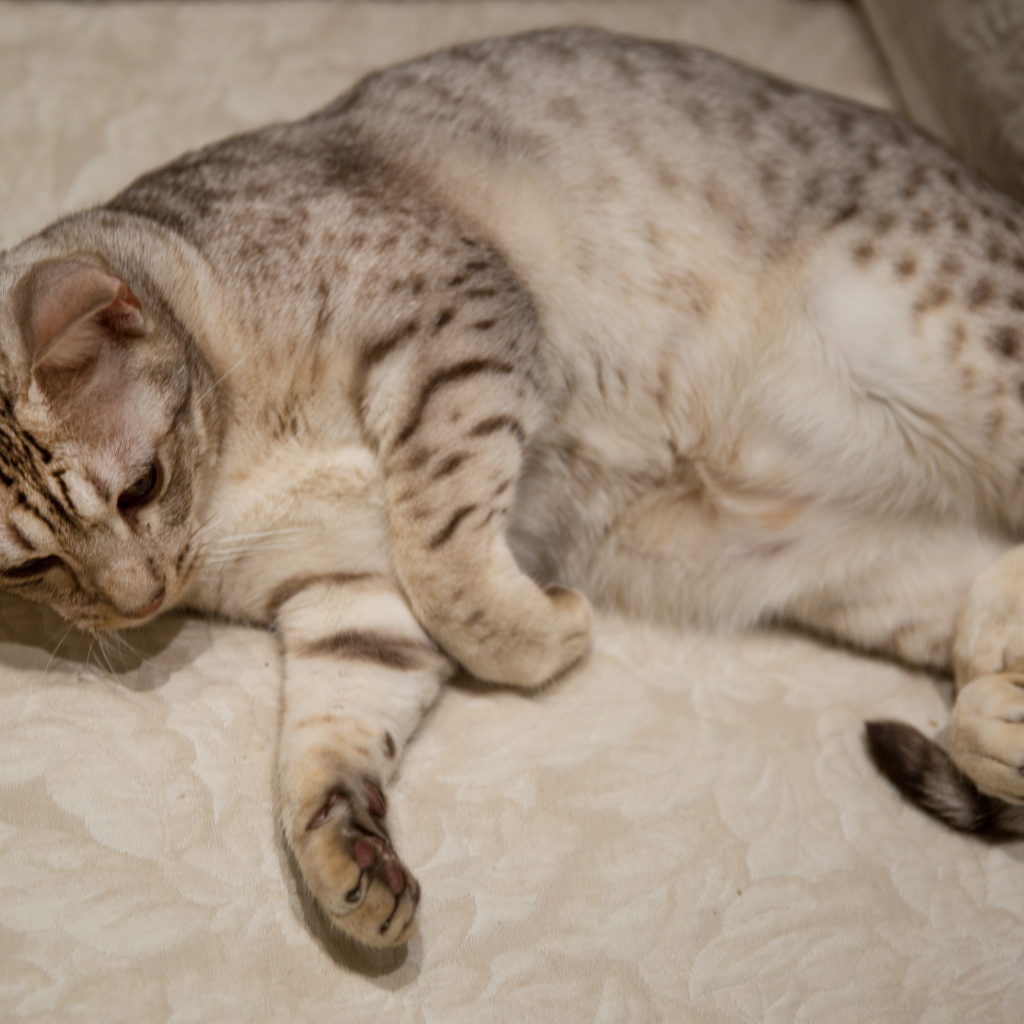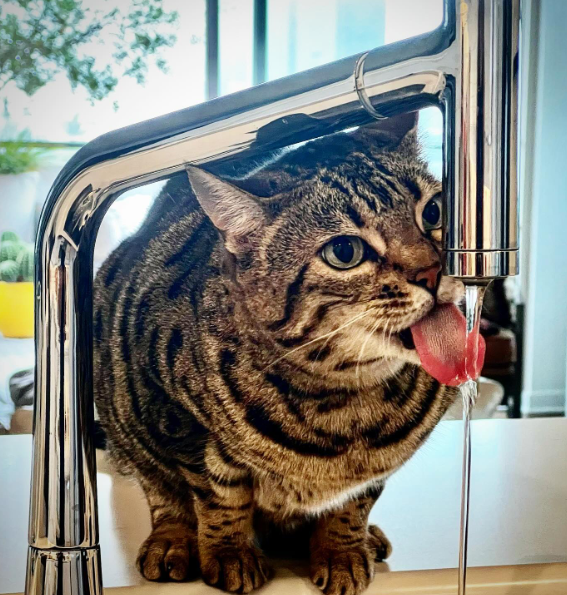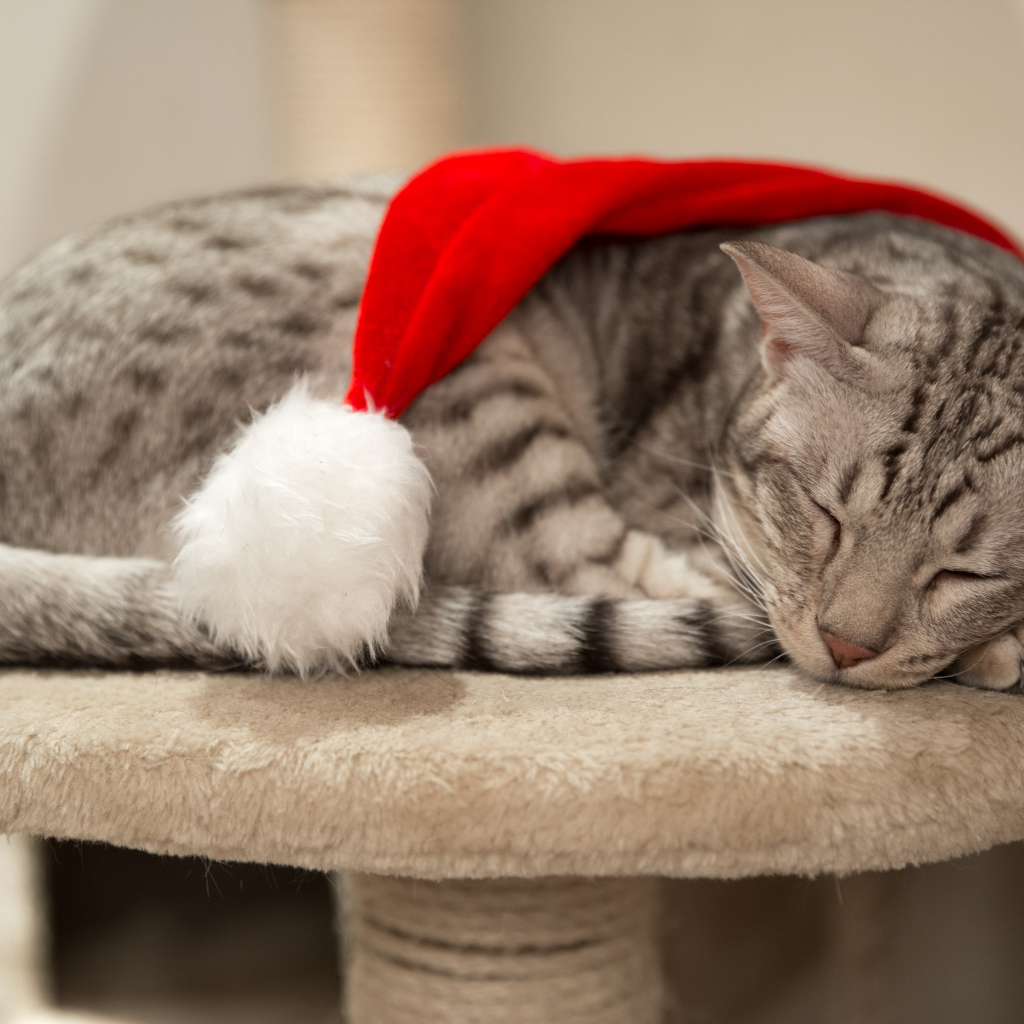As a cat lover, I have always been fascinated by the different breeds of cats. Two breeds that I find particularly intriguing are the Bengal cat and the Ocicat. While they may look similar at first glance, there are some key differences between the two breeds:

1. Appearance
One of the main differences between Bengal cats and Ocicats is their appearance.
Bengal cats have a distinctive coat pattern that resembles that of a leopard or a jaguar, with spots or marbled markings.
On the other hand, Ocicats have distinctive spots throughout their body with a coat that is more solid in color. Ocicats have a more domestic look, while Bengal cats tend to have a more exotic appearance.
2. Personality
Another difference between the two breeds is their personalities.
While both breeds are known for being friendly and affectionate, Bengal cats are typically more energetic and playful than Ocicats. They are also known for being more vocal and demanding attention.
Ocicats, on the other hand, are more laid back and tend to be quieter.
3. Size
Bengal cats are typically larger than Ocicats and have a more athletic build. They are also more muscular and have a more powerful appearance.
Meanwhile, Ocicats are smaller and more compact.
4. Color
Bengal cats are typically found in a couple of pattern variations, whereas the Ocicat is found in over 12 different colors and patterns. The standard colors for the Ocicat are chocolate, cinnamon, and tawny.
Origin and History

In this article, I will be comparing two popular cat breeds, the Bengal Cat and the Ocicat. Let’s start by exploring the origin and history of these two breeds.
Asian Leopard Cat and the Bengal
The Bengal Cat breed originated in the United States in the 1960s. Jean Mill, a breeder, crossed an Asian leopard cat with a domestic cat to create the Bengal breed.
The Asian leopard cat is a small wildcat that is native to Southeast Asia.
Bengals were initially bred for their unique coat patterns, which resembled the wild markings of the Asian leopard cat. Over time, Bengal breeders have focused on breeding for temperament and health, resulting in a friendly and active breed.
Siamese and Abyssinian: Foundations of the Ocicat

The Ocicat breed was also developed in the United States, but its origins are slightly different. Virginia Daly, a breeder from Michigan, wanted to create a breed of cat that looked like a wildcat but had the temperament of a domestic cat.
She crossed a Siamese, Abyssinian, and an American Shorthair to create the Ocicat breed. The result was a cat with distinctive spots throughout its body, similar to the markings of an ocelot, a wildcat native to South America.
Physical Characteristics
Bengals are a truly unique breed with some distinctive physical characteristics. In this section, I’ll compare the physical characteristics of Bengal cats and Ocicats.
Coat and Patterns
One of the most striking features of Bengal cats is their coat.
Bengals have a soft, smooth coat that is covered in a variety of distinctive markings. These markings can come in a range of colors, including brown, silver, and snow.
The coat of a Bengal cat also has a wild appearance, with spots and rosettes that give them a leopard-like appearance.
Ocicats, on the other hand, have a short, smooth coat that comes in a variety of colors and patterns. Unlike Bengals, Ocicats do not have a wild appearance. Instead, they have spots or a marble pattern that gives them a unique look.
Size and Body Structure
Bengal cats are a medium to large breed, with males weighing between 10 to 15 pounds and females weighing between 8 to 12 pounds. They have a muscular, agile body that is built for hunting.
Bengals have a distinctive head shape, with small ears and a broad nose.
Ocicats are also a medium to large breed, with males weighing between 10 to 15 pounds and females weighing between 6 to 10 pounds. They have a well-muscled, graceful physique and a distinctive head shape, with large ears and a wedge-shaped nose.

In terms of physical differences, Bengals are generally larger and more muscular than Ocicats. They also have a wilder appearance, with distinctive spots and rosettes on their coat.
Meanwhile, Ocicats have a more subtle appearance, with a short, smooth coat and a marble pattern or spots.
Personality and Temperament
Bengal Cats and Ocicats are both known for their friendly and social personalities. They are highly active and playful cats that require plenty of mental and physical stimulation. In this section, I will discuss the personality and temperament of these two breeds in more detail.
Social and Playful Nature
Both Bengal Cats and Ocicats are highly social cats that love to interact with their humans.
They are known for their playful and active nature and will often seek out attention from their owners. They are also highly vocal cats that will often meow and purr to communicate with their humans.
Bengal Cats are particularly known for their strong athletic abilities and love of play.
They are highly energetic cats that require plenty of space to run and play. They are also highly curious cats that love to explore their surroundings.
On the other hand, Ocicats are known for their outgoing and affectionate personalities.
They are highly social cats that love to interact with their humans and other pets. They are also highly intelligent cats that love to learn new things and play games with their owners.
Intelligence and Activity Level
Both Bengal Cats and Ocicats are highly intelligent cats that require plenty of mental stimulation.
They are both highly active cats that require plenty of playtime and exercise to keep them happy and healthy.
Bengal Cats are particularly known for their high activity level and need for plenty of physical exercise.
They are highly intelligent cats that love to learn new things and play games with their owners. They are also highly independent cats that require plenty of space to explore and play.
Meanwhile, Ocicats are known for their high intelligence and need for mental stimulation.
They are highly curious cats that love to learn new things and play games with their owners. They are also highly social cats that require plenty of attention from their owners to keep them happy and healthy.
Common Health Issues

Here are some important things to keep in mind:
Like all cats, Bengals and Ocicats can be prone to certain health issues.
One of the most common concerns for Bengal Cats is hypertrophic cardiomyopathy (HCM), a condition that affects the heart. Regular check-ups with a veterinarian can help catch any potential issues early on.
Ocicats, on the other hand, are generally healthy cats with no known breed-specific health problems.
Another concern for both breeds is progressive retinal atrophy (PRA), a genetic condition that can lead to blindness. It is important to get your cat tested for this condition before breeding or adopting.
Grooming and Exercise
Both Bengals and Ocicats have short, smooth coats that are easy to maintain. Regular brushing can help keep their coats shiny and healthy.
In terms of exercise, both breeds are active and playful, so it is important to provide them with plenty of toys and opportunities to play.
As for weight management, it is important to monitor your cat’s food intake and provide them with a balanced diet. Obesity can lead to a number of health problems, so it is important to keep your cat at a healthy weight.
Behavior and Training
Bengal Cats and Ocicats are known for their energetic and playful behavior.
They love to climb, jump, and hunt, so it’s important to provide them with plenty of toys and opportunities to exercise. They are also very affectionate and enjoy spending time with their owners. However, they can be quite vocal and demand attention, so be prepared to give them lots of love and affection.
Both breeds are highly intelligent and can be trained to do tricks and respond to commands. However, they require a lot of patience and positive reinforcement, as they can be stubborn at times.
It’s important to start training them from a young age, as kittens are more receptive to learning new things.
Suitability for Families

Bengal Cats and Ocicats are both great choices for families with children. They are gentle and playful, and they enjoy interacting with people of all ages.
However, it’s important to supervise young children around these breeds, as they can be quite active and may accidentally scratch or bite.
Both breeds are also well-suited for households with other pets, as they are generally friendly and sociable. However, they do have a strong hunting instinct, so it’s important to introduce them to other animals slowly and carefully.
In terms of lifestyle, both breeds require a lot of attention and stimulation. They enjoy climbing and playing, so it’s important to provide them with plenty of toys and opportunities to exercise.
They are also very social and enjoy spending time with their owners, so be prepared to spend lots of time with them.
Breed Comparisons
When comparing Bengal cats and Ocicats, several traits set them apart. Let’s start with their appearance.
While both breeds are known for their exotic appearance, there are some differences in their coat patterns.
Bengals have a distinctive “rosette” pattern, while Ocicats have spots throughout their body with a strong “M” shape on their forehead.
Bengals come in a variety of colors, including silver, while Ocicats have a more limited range of colors, such as chocolate and cinnamon.
In terms of size, Bengals tend to be larger than Ocicats, with longer legs. However, both breeds are strong and muscular.
When it comes to personality, both breeds are sociable and enjoy being around people.
Bengals are known for their intelligence and can be trained to do tricks, while Ocicats are easy to train and require low maintenance.
What are the personality differences between Bengal cats and Ocicats?

Bengal cats and Ocicats share some personality traits such as being active, playful, and affectionate. However, Bengal cats are known to be more vocal and demanding than Ocicats.
They are also more independent and may not always seek attention from their owners. On the other hand, Ocicats are known to be more social and love being around people.
They are also more trainable than Bengal cats and can learn tricks and commands easily.
How do Bengal cats and Ocicats compare in terms of size?
Bengal cats are typically larger than Ocicats. They can weigh anywhere between 8 to 15 pounds while Ocicats usually weigh between 6 to 12 pounds.
Bengals are also longer and more muscular than Ocicats.
What is the average price difference between Bengal cats and Ocicats?
The average price for a Bengal cat is around $1,000 to $2,000 while the average price for an Ocicat is around $600 to $1,200.
However, prices can vary depending on the breeder, location, and the cat’s pedigree.
How does the Ocicat breed compare to the Bengal and Savannah cats?
The Ocicat breed is a cross between Siamese, Abyssinian, and American Shorthair cats. They are known for their wild-looking spots and are often compared to Bengal and Savannah cats.
While all three breeds share some similarities, such as their active and playful nature, they also have distinct differences.
Bengals are known for their wild appearance and love for water, while Savannah cats are much larger and more exotic-looking than Ocicats.
What are the distinguishing features of an Ocicat?
Ocicats have a distinctive wild-looking appearance with spots throughout their body. They come in a variety of colors and patterns, including chocolate, cinnamon, and lavender.
They also have large, almond-shaped eyes that are usually green or gold in color. Ocicats are also known for their muscular build and sleek, short hair.
If you enjoyed this article, you may also enjoy our other articles: differences between Bengals and Egyptian Mau as well as Bengals vs Main Coons!
